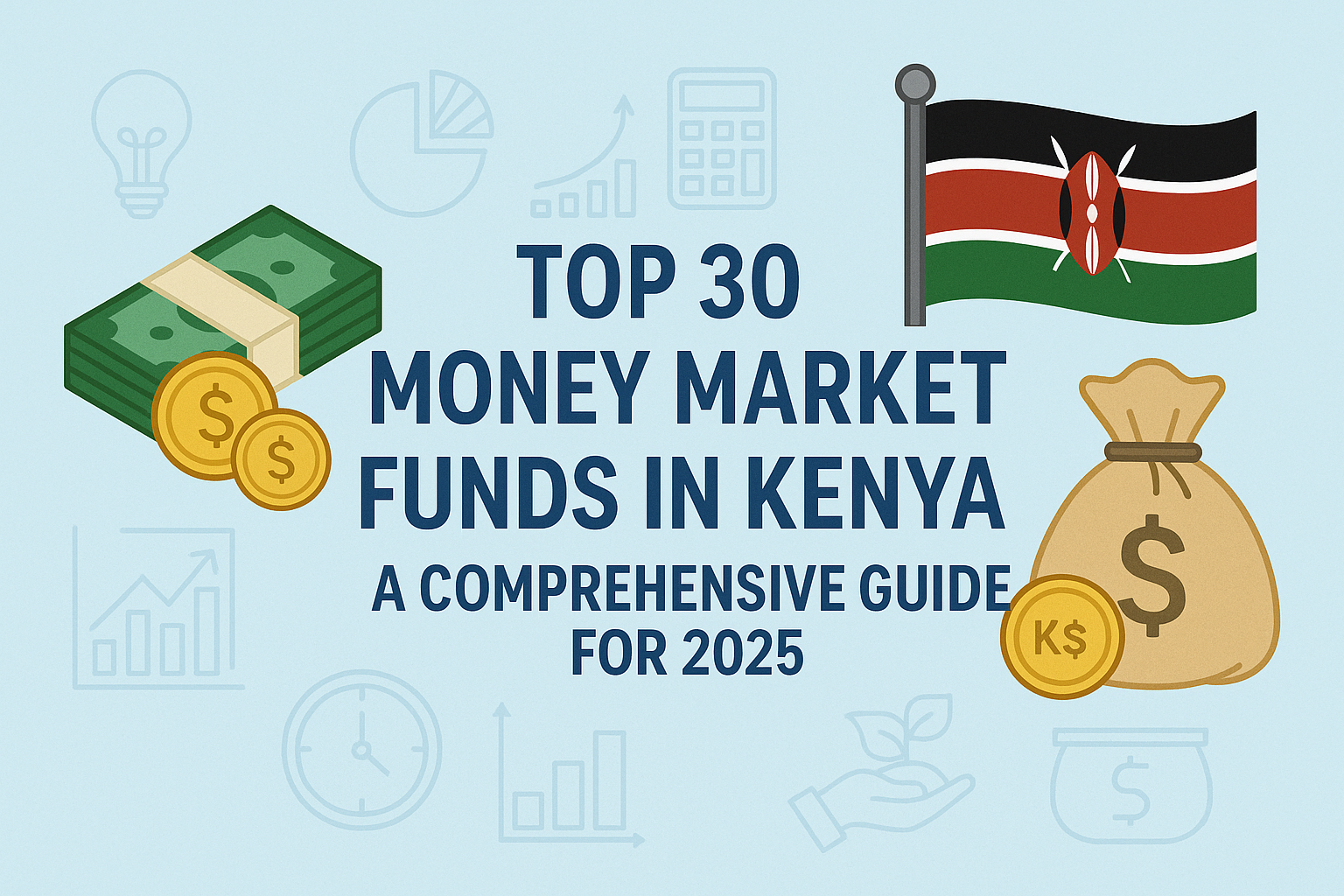In Kenya, most people live paycheck to paycheck. Salaries are swallowed by rent, food, transport, and endless bills. But in 2025, a growing number of Kenyans are realizing the importance of passive income—money that comes in regularly without you actively working every single day.
Passive income doesn’t mean “get rich quick.” Instead, it’s about setting up systems, investments, or assets that generate income while you sleep. Think of it as planting mango trees today so you can harvest fruits for years.
In this detailed guide, we’ll explore the best passive income strategies for Kenyans in 2025, analyze what actually works, and expose the traps that don’t.
What Exactly is Passive Income?
Passive income is money you earn without actively trading your time for it daily. Unlike your salary (active income), passive income keeps flowing whether you’re at work, resting, or even on holiday in Mombasa.
Examples:
- Dividends from stocks or SACCOs
- Rent from property
- Royalties from books, music, or digital products
- Profits from an online course or YouTube channel
Passive income requires setup and discipline upfront, but later, it runs with minimal effort.
Why Passive Income Matters in Kenya (2025 Context)
- High Cost of Living – Food, fuel, and transport costs keep rising. Passive income bridges the gap.
- Unstable Employment – The job market is uncertain; retrenchments and delayed salaries are common.
- Digital Opportunities – With M-Pesa, online banking, and social media, Kenyans have easier access to financial tools.
- Retirement Planning – NSSF alone won’t sustain most retirees. Passive income provides long-term security.
- Multiple Hustles Culture – Kenyans already embrace “side hustles.” Passive income is the smart evolution.
Passive Income Strategies That Work in Kenya (2025)
Let’s break down the proven strategies that work for Kenyans right now.
1. Money Market Funds (MMFs)
MMFs are the simplest and most reliable form of passive income for beginners.
- Average returns: 10–12% per year
- Low entry: Some funds allow as little as KES 500 to start
- Accessible: Withdraw in 2–3 days
- Top providers: Zimele, Cytonn, Sanlam, Nabo, CIC
Example: If you invest KES 100,000 in a fund at 11% interest, you earn KES 11,000 per year passively.
✔️ Works: Great for safe growth of idle cash
❌ Doesn’t: Won’t make you rich overnight; better as a base passive strategy
2. Dividend Stocks & SACCOs
Kenya has over 175 listed companies at the Nairobi Securities Exchange (NSE). Many pay dividends annually. Similarly, SACCOs pay dividends of 6–12% per year.
Examples:
- Equity Group, Safaricom, KCB — consistent dividend payers
- SACCOs like Stima SACCO, Mwalimu SACCO
✔️ Works: Long-term wealth building and compounding returns
❌ Doesn’t: Requires patience and knowledge of the market
3. Real Estate (Rentals & Airbnb)
Owning property is a classic Kenyan dream. In 2025, Airbnb and short-term rentals are outperforming traditional rentals.
Options:
- Build single units (bedsitters/1BRs) near universities and estates
- Buy land and build rental apartments
- Furnish a house and list on Airbnb in Nairobi, Mombasa, Naivasha
✔️ Works: Reliable long-term passive income
❌ Doesn’t: Requires high capital, management, and may be affected by oversupply in some areas
4. YouTube & Digital Content
Kenya is in the top 3 YouTube markets in Africa. Creators earn via ads, sponsorships, and product sales.
Earnings:
- Ads: KES 100–300 per 1,000 views
- Sponsorships: KES 10,000+ per video depending on niche
- Affiliate links and product promotions
✔️ Works: If you consistently produce quality content (finance, lifestyle, tech, comedy)
❌ Doesn’t: If you expect instant success without effort
5. Blogging & E-Books
With affordable internet, Kenyans are searching for knowledge daily. Blogs that solve real problems (finance, farming, tech, jobs) attract traffic and can be monetized.
Ways to earn:
- Ads (Google AdSense)
- Sponsored posts
- Selling e-books or digital courses
Example: A finance blog earning $500 (KES 70,000) monthly from ads is a strong passive stream once built.
✔️ Works: If niche is strong and SEO optimized
❌ Doesn’t: If content is poor or copied
6. Farming with Smart Systems
Agribusiness is risky but can be made semi-passive using contract farming, greenhouses, and irrigation systems.
Examples:
- Avocado farming for export
- Dairy farming with modern setups
- Poultry farming with automated feeders
✔️ Works: If structured well and linked to markets
❌ Doesn’t: If done casually without research
7. Digital Products (Courses, Apps, Templates)
Creating digital assets once and selling them repeatedly is a goldmine.
Ideas for Kenyans:
- Online courses (finance, coding, freelancing, cooking)
- Mobile apps or MPesa integrations
- Printable planners, resumes, and templates
✔️ Works: Scalable income with low maintenance
❌ Doesn’t: Needs upfront effort and marketing
8. Peer-to-Peer Lending Platforms
Platforms like Pezesha and Mwananchi Credit P2P models allow you to lend money and earn interest.
✔️ Works: If borrowers are reliable
❌ Doesn’t: High default risk — only invest what you can afford to lose
9. Royalties (Books, Music, Photography)
Kenyan creatives can earn royalties through:
- Self-publishing on Amazon Kindle
- Selling music on platforms like Spotify, Boomplay
- Stock photography sites
✔️ Works: For creatives who build quality products
❌ Doesn’t: If you expect fast money with low-quality work
Passive Income Strategies That Don’t Work (Traps to Avoid in 2025)
Not every strategy works in Kenya. Here are traps Kenyans fall into:
- Ponzi Schemes & “Investment Clubs” promising 30% monthly returns – If it sounds too good to be true, it is.
- Crypto & Forex scams – Unless you’re an expert, avoid shady “guaranteed profit” groups.
- Unresearched Agribusiness – Many Kenyans lost millions in failed quail farming or avocado deals.
- Fake Online Surveys & Click-to-Earn – Pay peanuts or never pay at all.
- Unregulated lending apps – Risky for both borrowers and investors.
👉 If it’s not transparent, regulated, or sustainable, it won’t work long-term.
How to Start Building Passive Income (Step by Step for Kenyans)
- Secure an Emergency Fund First – 3–6 months’ expenses (as we covered earlier).
- Choose a Starter Strategy – e.g., Money Market Fund (low risk).
- Add a Growth Strategy – e.g., SACCO + dividend stocks.
- Diversify Over Time – Add digital content, Airbnb, or e-books.
- Reinvest Profits – Grow your streams instead of consuming.
- Stay Disciplined – Passive income is a marathon, not a sprint.
FAQs on Passive Income in Kenya
Q1: How much do I need to start?
- MMFs: As low as KES 500
- SACCOs: KES 3,000–20,000 initial deposits
- Stocks: KES 1,000 minimum
- Airbnb/real estate: KES 500,000+
Q2: Can students build passive income?
Yes! Blogging, YouTube, and e-books are low-capital entry points.
Q3: How do I avoid scams?
Stick to regulated institutions (CBK, CMA-licensed funds, registered SACCOs).
Q4: Which passive income pays fastest?
- Blogging & YouTube: 6–12 months
- MMFs & SACCOs: Immediate but small returns
- Real estate: Long-term (years)
Q5: Should I quit my job once I build passive income?
Not immediately. Build multiple stable streams before considering full independence.
Conclusion: What Works & What Doesn’t
In 2025, the smartest Kenyans are combining safe, stable strategies (MMFs, SACCOs, dividend stocks) with scalable digital assets (YouTube, blogs, e-books).
Passive income isn’t about overnight riches — it’s about financial security, flexibility, and freedom. Start small, stay consistent, and within a few years, your passive income can rival or even exceed your salary.
Remember: Don’t chase shortcuts. Focus on what actually works in Kenya’s context.


